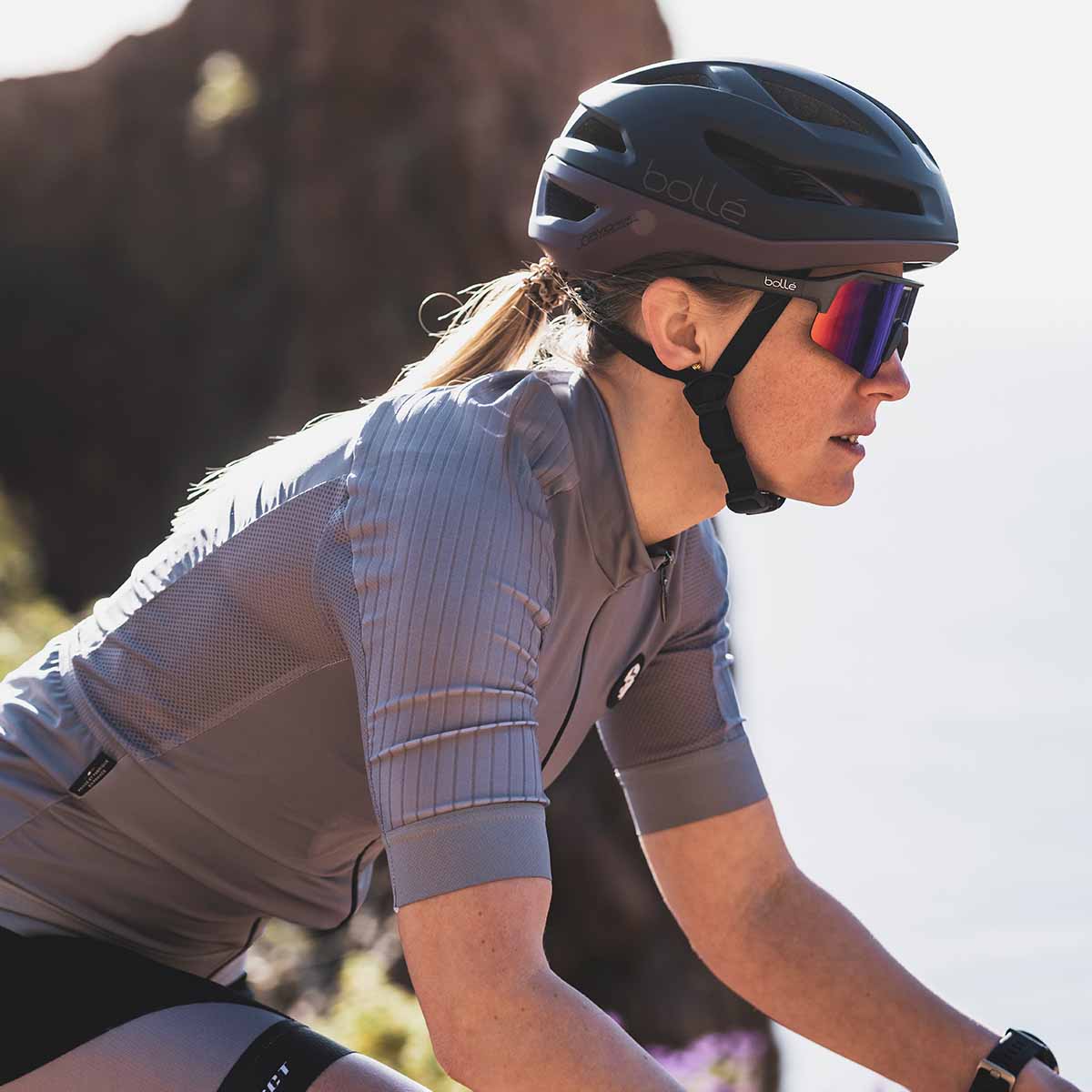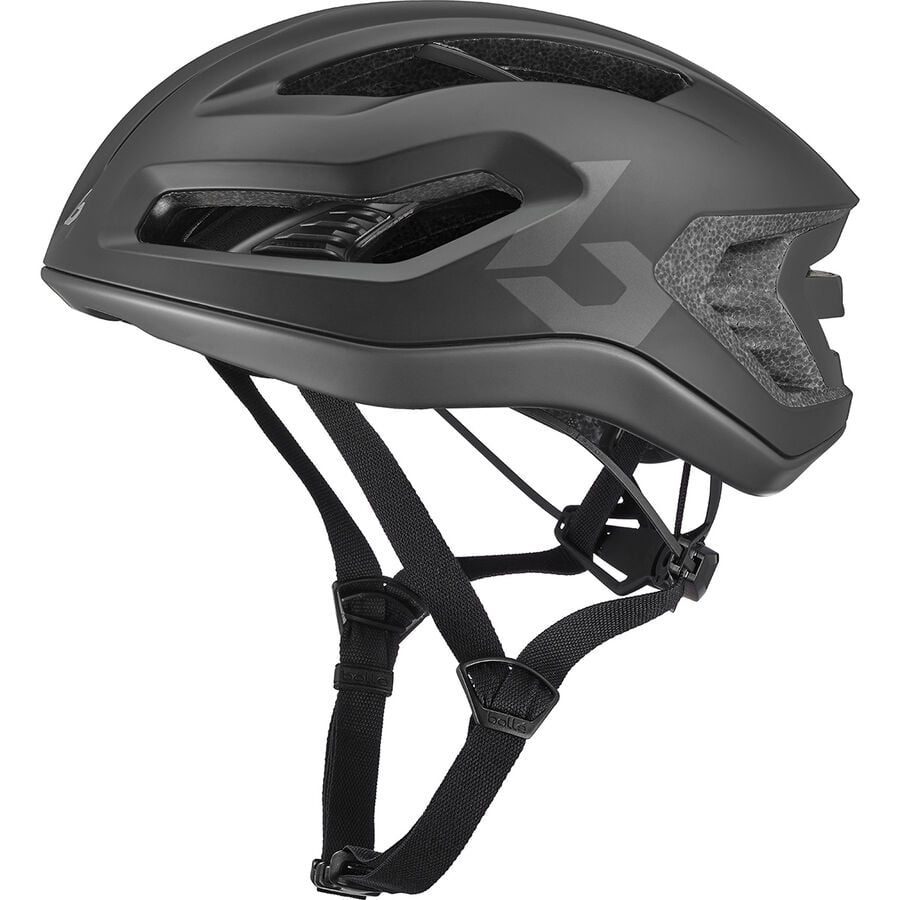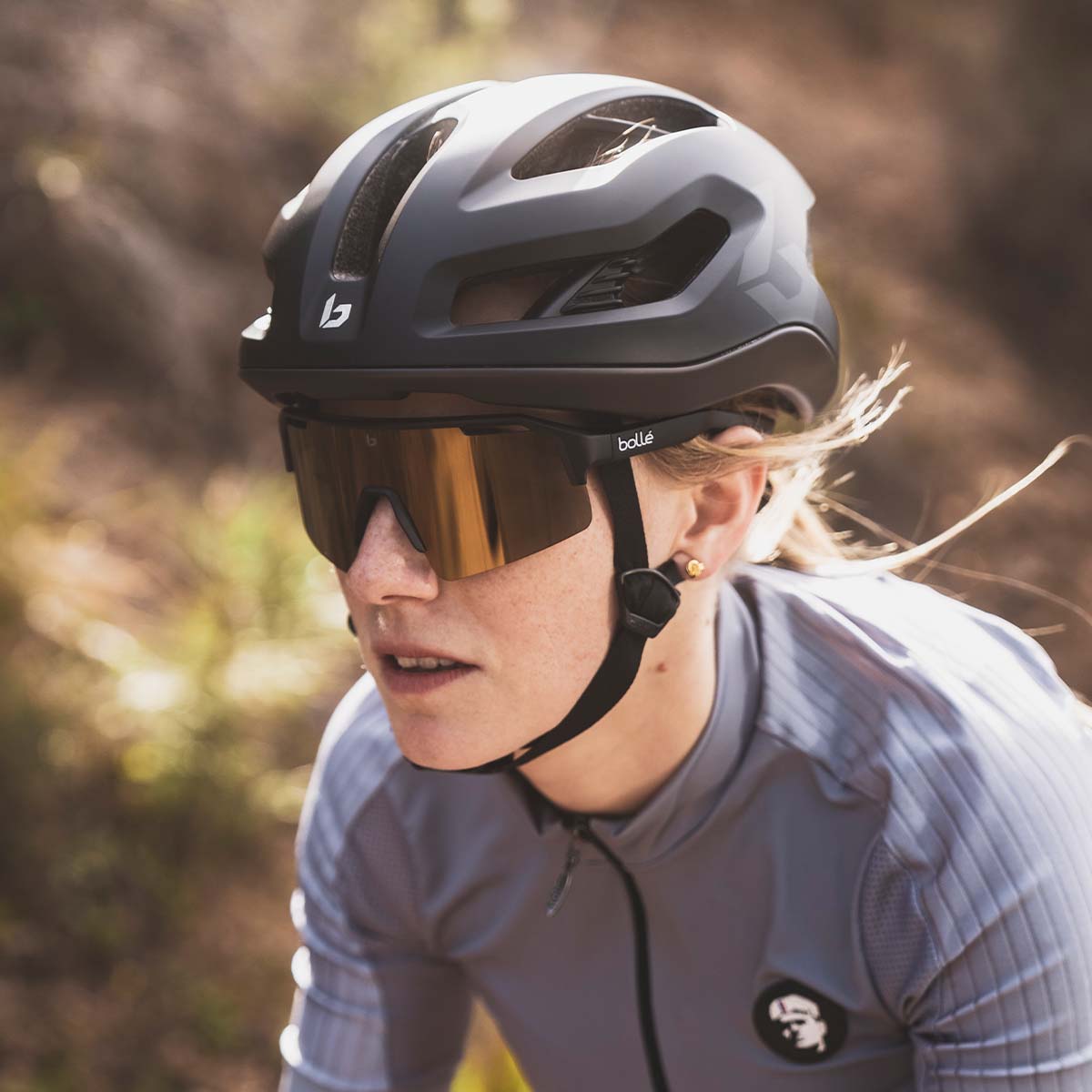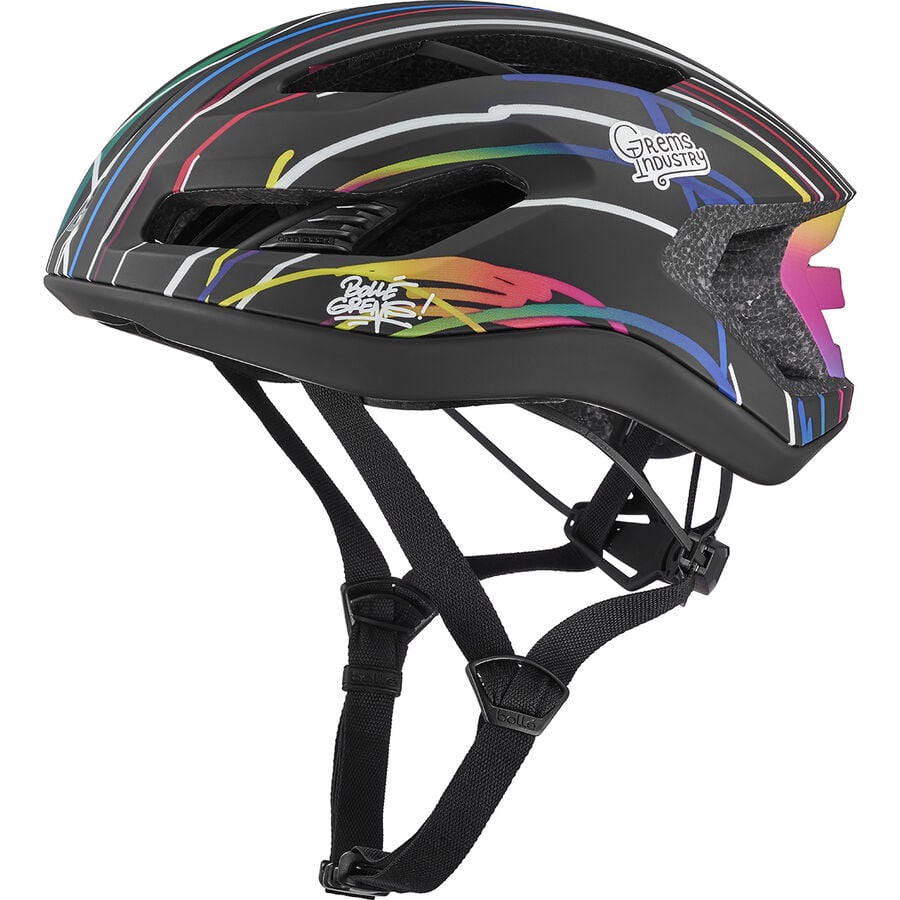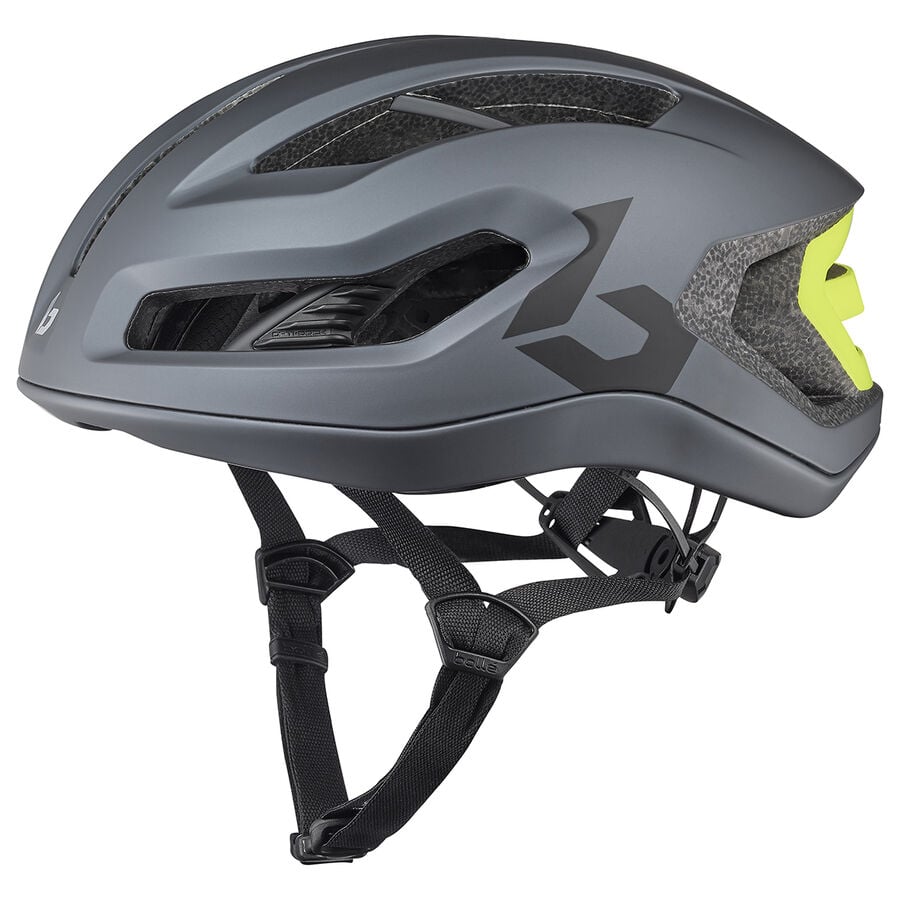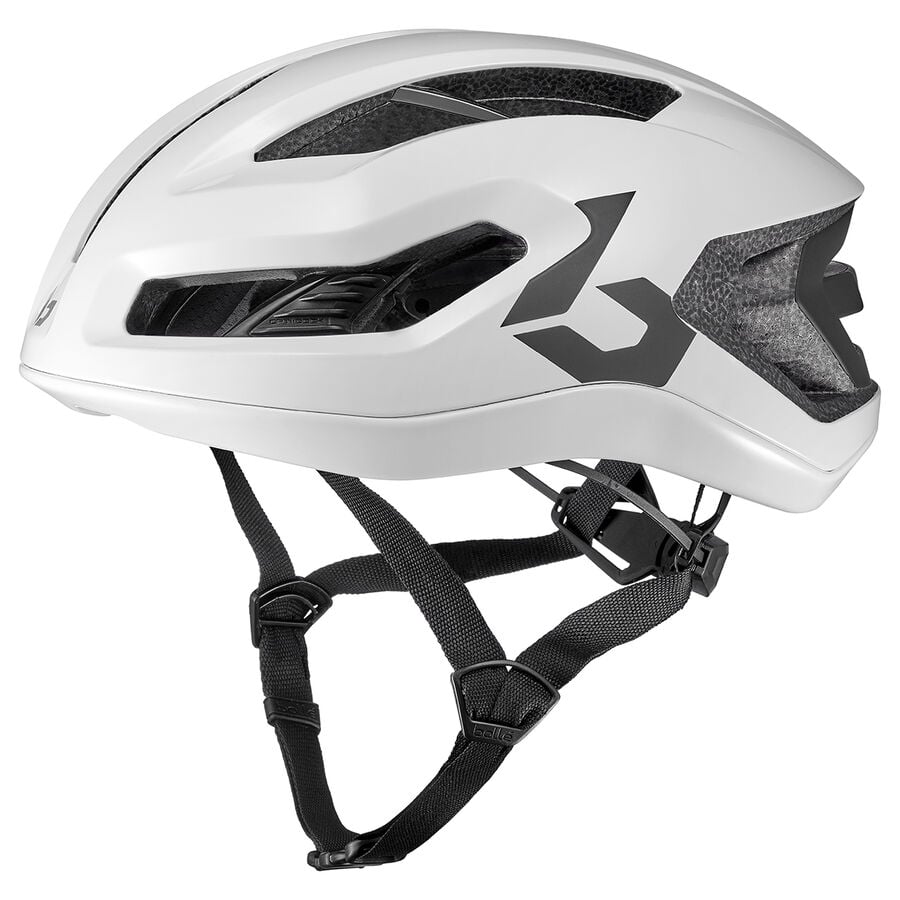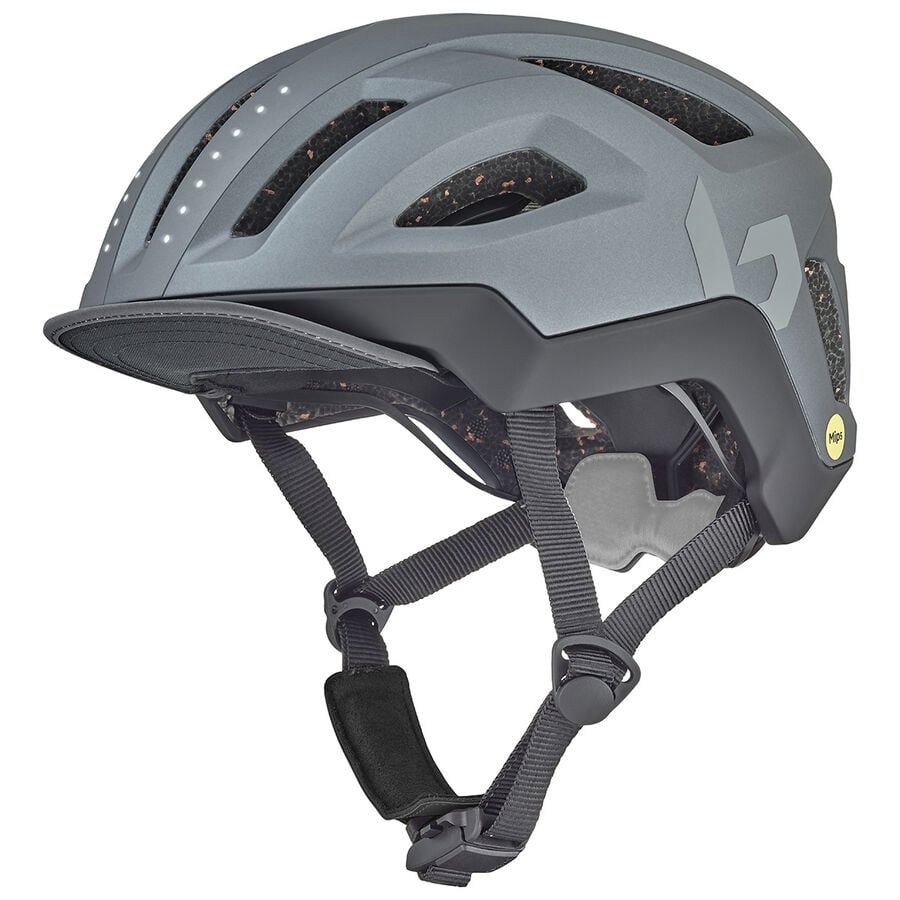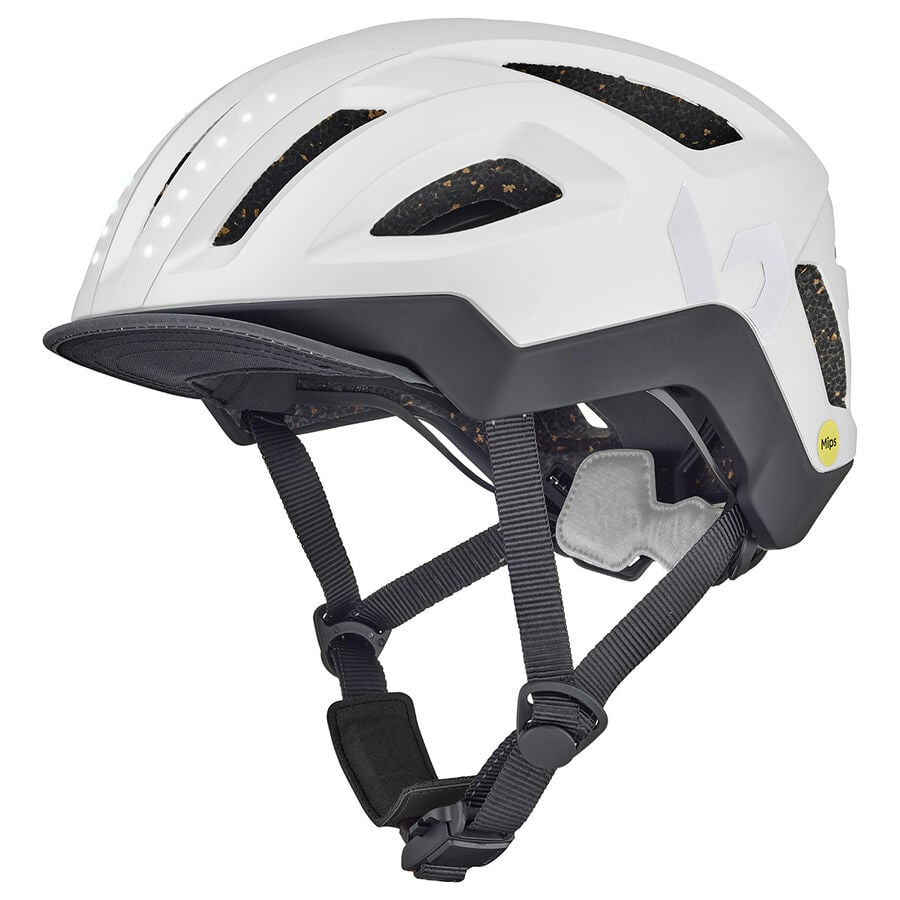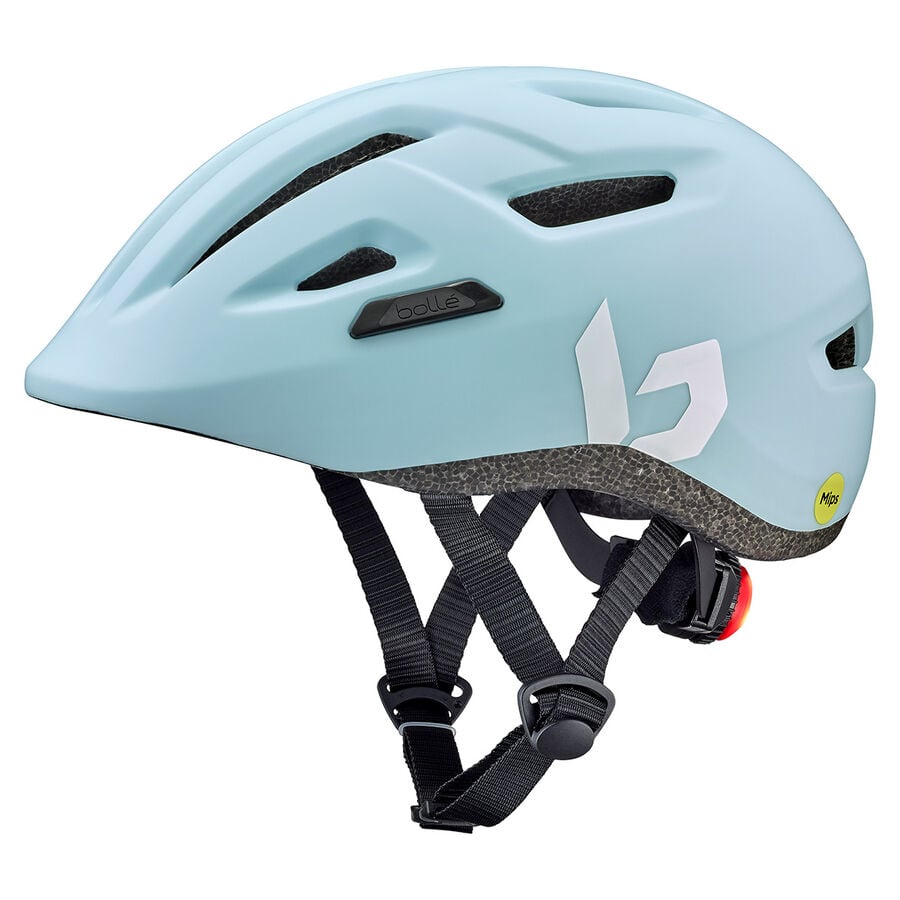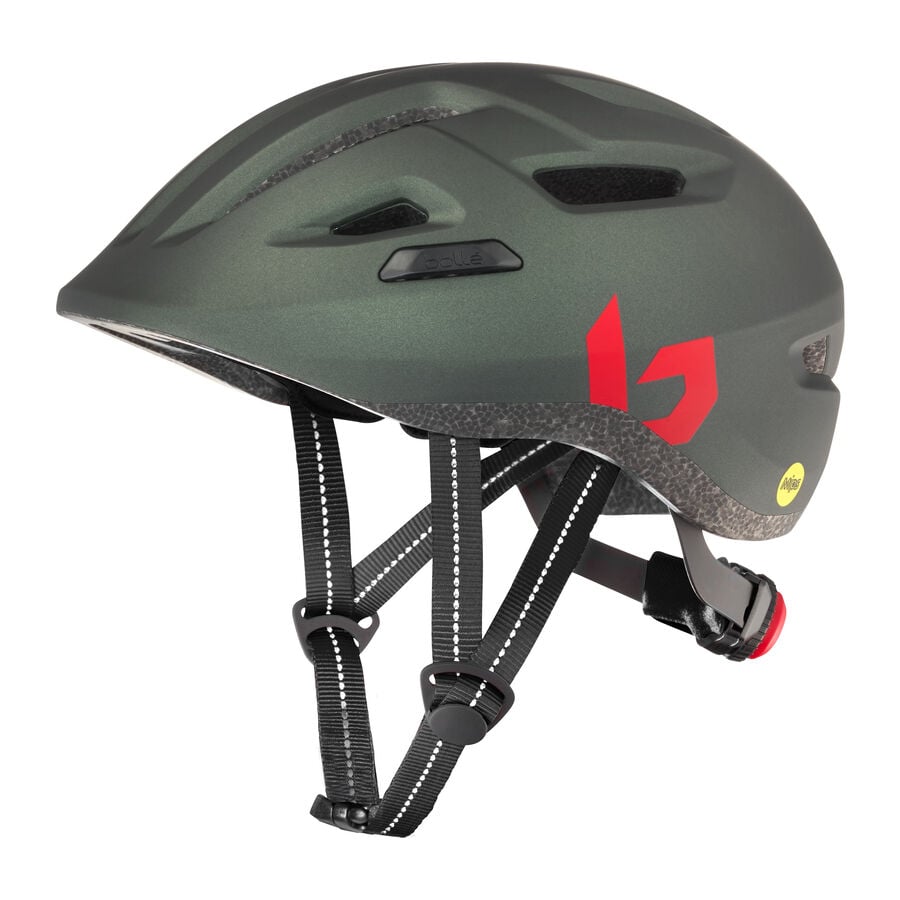HOW TO CHOOSE THE RIGHT BIKE HELMET?
April 10, 2025 / 8-minute read
When cycling, safety isn’t optional, it’s a priority. And your bike helmet is your number one ally when it comes to protecting your head in case of a fall or impact. Whether you're an urban commuter, a mountain biking enthusiast, or a dedicated road cyclist, choosing the right helmet is essential. So what should you look out for? Bollé is here to guide you.

WHICH HELMET FOR WHICH TYPE OF RIDING?
There’s no such thing as a one-size-fits-all bike helmet. Each cycling discipline has its own requirements in terms of protection, comfort, and features. That’s why choosing a helmet adapted to your riding style is essential for optimal protection and tailored comfort.
+ ROAD BIKE HELMET: AERODYNAMICS AND LIGHTWEIGHT DESIGN
For road cyclists, performance is often a top priority. Road helmets are designed to be aerodynamic, helping you cut through the air and gain those precious seconds. They’re also lightweight to avoid adding strain on climbs and to ensure optimal comfort during long rides. Ventilation is another key factor, as road cyclists tend to generate a lot of heat.
+ MOUNTAIN BIKE HELMET: ENHANCED PROTECTION AND DURABILITY
In mountain biking, the risk of falls and impacts is higher than in road cycling. MTB helmets are therefore designed to provide enhanced protection, especially around the back of the head and the temples. They’re built tougher to withstand impacts and deflect branches or flying debris. A distinctive feature of MTB helmets is the visor, which shields you from the sun, rain, and trail splashes. Ventilation also remains a key factor, as MTB rides can be physically demanding, particularly on climbs.
+ URBAN BIKE HELMET: SAFETY AND VISIBILITY FOR DAILY RIDING
For daily commutes in the city, an urban bike helmet must be primarily practical and secure. It provides basic protection for urban collisions and falls. Visibility is a crucial factor in the city, where you share the road with many other users. Some urban helmets come with reflective elements or LED lights to increase visibility. Style can also be an important consideration for some urban cyclists, who prefer a discreet and stylish helmet.

WHAT CRITERIA TO CONSIDER WHEN CHOOSING YOUR BIKE HELMET?
Beyond the type of cycling practice, several criteria should be carefully considered when choosing the ideal bike helmet. Each criterion is important and contributes to your safety, comfort, and riding pleasure.
+ SAFETY STANDARDS
The first and most important criterion is the level of protection offered by the helmet. Always check that the helmet has the CE marking and meets the European standard EN 1078 (or the American CPSC standard for the USA). These standards ensure that the helmet has undergone rigorous testing and provides a minimum level of protection in case of impact. For added protection, some helmets incorporate technologies like MIPS (Multi-directional Impact Protection System), which reduces rotational forces during an oblique impact.
+ COMFORT AND LIGHTWEIGHT DESIGN
A bike helmet must be comfortable enough for you to wear it on every ride. A helmet that is too heavy, too tight, or causes pressure points can quickly become unbearable. Weight is especially important for long rides or climbs. Try different models to find the one that fits best to the shape of your head and feels almost invisible once worn. The internal comfort pads play a crucial role in the helmet’s comfort. They should be soft, breathable, and well-positioned.
+ VENTILATION
Ventilation is a crucial criterion, especially if you ride in hot weather or engage in intense activities. A good ventilation system allows heat and sweat to escape, keeping your head cool and dry. The number and size of the vents are important factors, as is the helmet's internal design, which facilitates air circulation.
+ MIPS TECHNOLOGY
MIPS (Multi-directional Impact Protection System) is a safety technology increasingly found in high-end bike helmets. MIPS features a thin internal shell that can slightly slide within the helmet in the event of a collision. This movement helps reduce rotational forces transmitted to the brain during an oblique impact, which can be especially dangerous. Many Bollé helmets incorporate MIPS technology for enhanced protection.
+ MATERIALS
The materials used in a bike helmet’s construction influence its weight, resistance, comfort, and environmental impact. Most helmets are made with an external polycarbonate (PC) shell and an internal expanded polystyrene (EPS) foam layer.
Bollé stands out for its eco-friendly approach, using recycled and bio-based materials in most of its models. This commitment is reflected in the use of recycled plastics for the shell and natural fibers for the comfort pads.
+ VISIBILITY
Visibility is an essential criterion, especially if you ride in the city, at night, or in low light conditions. A bike helmet should make you visible to other road users. Bright colors and reflective elements increase your visibility. Some helmets incorporate LED lights (front, rear, or flashing) for maximum visibility. Choose a helmet with good visibility, especially if you regularly ride in low-light conditions.
HOW TO CHOOSE THE RIGHT SIZE FOR YOUR BIKE HELMET?
Choosing the correct helmet size is essential for ensuring effective protection and optimal comfort. A helmet that’s too large won’t protect you properly in the event of an impact, while one that’s too small will be uncomfortable and may cause headaches.
To determine your helmet size, measure the circumference of your head using a tape measure, placing it just above your eyebrows and ears. Then refer to the manufacturer’s size guide to choose the corresponding size.
Once the helmet is on, it should fit securely on your head, without excessive movement, and should not compress your skull. Use the adjustment systems (rear dial, side straps) to precisely adjust the helmet to your head shape.
HOW TO CHOOSE A BIKE HELMET FOR CHILDREN: WHAT TO CONSIDER?
Children also need a bike helmet that is suitable for their body shape and practice. Helmets for children are designed for smaller heads and provide good support. They are often lighter and more colorful to appeal to kids.
Look for helmets with simple and easy-to-adjust systems so that the child can adjust it themselves. Involve your child in choosing their helmet, so they feel proud of wearing it and accept it more easily. Regularly check the size of your child’s helmet, as their head grows quickly.
WHEN TO REPLACE YOUR BIKE HELMET?
A bike helmet isn't eternal. Even without an impact, it’s recommended to replace your helmet every 5 years or so. The materials used in the helmet (particularly the polystyrene) degrade over time due to UV exposure, heat, and sweat, which can reduce its effectiveness in case of an impact.
After a significant impact, even if the helmet shows no visible damage, it is crucial to replace it, as its internal structure may have been compromised.
If your helmet has cracks, dents, or signs of aging, don’t wait to replace it. A helmet in good condition is your best protection while cycling.

